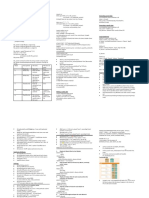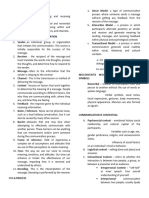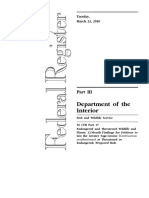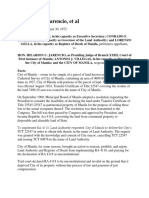prac1
Uploaded by
asharathod1999prac1
Uploaded by
asharathod1999Rathod Dharm Nitin - 22SE02ML063 Business Analytics
Practical – 1
Import a student.csv file and filter the file with scores more than 70 and save
it to a new csv file name high_score.csv
import pandas as pd
# Load the CSV file into a pandas DataFrame
df = pd.read_csv("student_scores.csv")
# Filter rows where the score is greater than 70
filtered_df = df[df["score"] > 70]
# Display the filtered DataFrame
print(filtered_df)
# Save the filtered data to a new CSV file
filtered_df.to_csv("high_scores.csv", index=False)
Rathod Dharm Nitin - 22SE02ML063 Business Analytics
Open the Excel file named sales_data.xlsx, which contains the columns: Date,
Product, Quantity, and Revenue. Calculate the total revenue for each product.
Save the results to a new Excel sheet named product_summary.xlsx.
import pandas as pd
# Load the sales_data.xlsx file
df = pd.read_excel("sales_data.xlsx")
# Calculate the total revenue for each product
product_summary = df.groupby("Product", as_index=False)["Revenue"].sum()
# Save the results to a new Excel file
summary_file_path = "product_summary.xlsx"
product_summary.to_excel(summary_file_path, index=False)
print("Saved file data:\n", product_summary)
Rathod Dharm Nitin - 22SE02ML063 Business Analytics
Objective: Handle JSON data and convert it to other formats. 1. Open the
JSON file named movies.json. Convert the JSON data into a pandas
DataFrame. Save the DataFrame into a CSV file named movies_table.csv.
import pandas as pd
import json
# Load the JSON file
with open("movies.json", "r") as file:
movies_data = json.load(file)
# Convert the JSON data into a pandas DataFrame
df = pd.DataFrame(movies_data)
# Save the DataFrame to a CSV file
df.to_csv("movies_table.csv", index=False)
print("CSV file data:\n", df)
Rathod Dharm Nitin - 22SE02ML063 Business Analytics
Import data from the CSV file employee_data.csv, which contains columns:
EmployeeID, Name, Department, and Salary. Create a new SQLite database
named company.db and a table employees. Export the data from the CSV file
into the employees table. Query the database to verify the data has been
stored correctly.
import sqlite3
import pandas as pd
# Load the CSV data into a pandas DataFrame
df = pd.read_csv("employee_data.csv")
# Connect to SQLite database (it will create the database if it doesn't exist)
conn = sqlite3.connect("company.db")
cursor = conn.cursor()
# Create the 'employees' table
cursor.execute("""
CREATE TABLE IF NOT EXISTS employees (
EmployeeID INTEGER PRIMARY KEY,
Name TEXT,
Department TEXT,
Salary INTEGER
)
""")
# Insert data into the 'employees' table from the DataFrame
df.to_sql("employees", conn, if_exists="replace", index=False)
# Commit and close the connection
conn.commit()
# Verify the data
cursor.execute("SELECT * FROM employees LIMIT 3")
data = cursor.fetchall()
print(data)
conn.close()
Rathod Dharm Nitin - 22SE02ML063 Business Analytics
Import the following files: inventory.csv: Contains columns ProductID,
Product Name, and Stock. sales.json: Contains sales data for each ProductID
with columns ProductID, Quantity Sold, and Revenue. Merge the data from
both files on ProductID into a pandas DataFrame. Save the consolidated data
to an Excel file named inventory_sales_summary.xlsx.
import pandas as pd
# Step 1: Load the data from the CSV and JSON files
inventory_df = pd.read_csv("inventory.csv") # Replace with your file path
sales_df = pd.read_json("sales.json") # Replace with your file path
# Step 2: Merge the two dataframes on 'ProductID'
consolidated_df = pd.merge(inventory_df, sales_df, on="ProductID")
# Step 3: Save the merged DataFrame to an Excel file
consolidated_df.to_excel("inventory_sales_summary.xlsx", index=False)
print("Data from Excel file:\n", consolidated_df)
You might also like
- Usage of NumPy for Numerical Data in DetailNo ratings yetUsage of NumPy for Numerical Data in Detail52 pages
- Solutions For Reference Practical QuestionsNo ratings yetSolutions For Reference Practical Questions6 pages
- Class 12 Practical File Informatics Practices PythonNo ratings yetClass 12 Practical File Informatics Practices Python19 pages
- Data Manipulation in Python Using PandasNo ratings yetData Manipulation in Python Using Pandas12 pages
- Reading An Entire File at Once: Generating Current DateNo ratings yetReading An Entire File at Once: Generating Current Date2 pages
- Cheat Sheet: The Pandas Dataframe Object I: Preliminaries Get Your Data Into A DataframeNo ratings yetCheat Sheet: The Pandas Dataframe Object I: Preliminaries Get Your Data Into A Dataframe12 pages
- Walmart Data Analyst Interview ExperienceNo ratings yetWalmart Data Analyst Interview Experience10 pages
- Exploratory Data Analysis (Eda) With Pandas: (Cheatsheet)No ratings yetExploratory Data Analysis (Eda) With Pandas: (Cheatsheet)7 pages
- PRACTICAL FILE INFOMATICS PRACTICES 2024-25No ratings yetPRACTICAL FILE INFOMATICS PRACTICES 2024-2539 pages
- Angular Generative AI: Building an intelligent CV enhancer with Google GeminiFrom EverandAngular Generative AI: Building an intelligent CV enhancer with Google GeminiNo ratings yet
- Firebase Storage for Angular: A reliable file upload solution for your applicationsFrom EverandFirebase Storage for Angular: A reliable file upload solution for your applicationsNo ratings yet
- Senior Gen Biology2 Q3 - M2 - L1 For Printing100% (3)Senior Gen Biology2 Q3 - M2 - L1 For Printing20 pages
- 2019 Corbett Staged Model For Porphyry DevelopmentNo ratings yet2019 Corbett Staged Model For Porphyry Development7 pages
- CBSE Class 12 Psychology Question Paper 2022No ratings yetCBSE Class 12 Psychology Question Paper 20227 pages
- 12-Month Findings For Petitions To List The Greater Sage-Grouse As Threatened or Endangered, Proposed Rule 2010 USFWSNo ratings yet12-Month Findings For Petitions To List The Greater Sage-Grouse As Threatened or Endangered, Proposed Rule 2010 USFWS106 pages
- Rune Mage Prestige Class - The HomebreweryNo ratings yetRune Mage Prestige Class - The Homebrewery6 pages
- Dr. Prabir Kumar Das,: Infection Management AND Environment PlanNo ratings yetDr. Prabir Kumar Das,: Infection Management AND Environment Plan68 pages
- PDF Test Bank for Abnormal Psychology 6th Edition NolenHoeksema 0078035384 9780078035388 download100% (24)PDF Test Bank for Abnormal Psychology 6th Edition NolenHoeksema 0078035384 9780078035388 download47 pages
- Design For Assembly (Dfa) : Engr. Wan Sharuzi HJ Wan Harun Industrial Engineering, FKM75% (4)Design For Assembly (Dfa) : Engr. Wan Sharuzi HJ Wan Harun Industrial Engineering, FKM124 pages
- Using The Business Model Canvas To Guide Students in Building Business PlansNo ratings yetUsing The Business Model Canvas To Guide Students in Building Business Plans14 pages

























































































